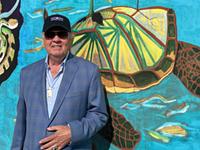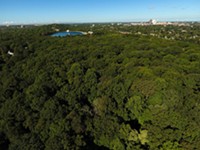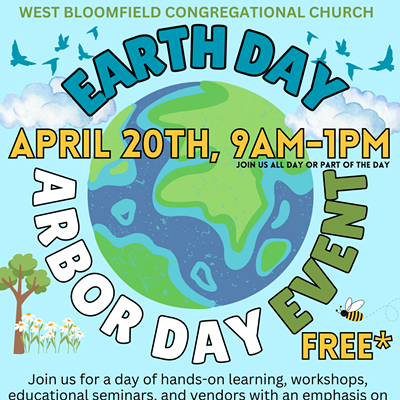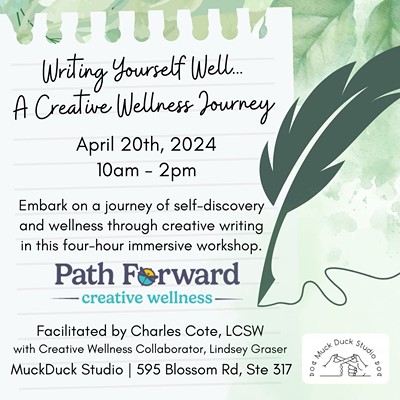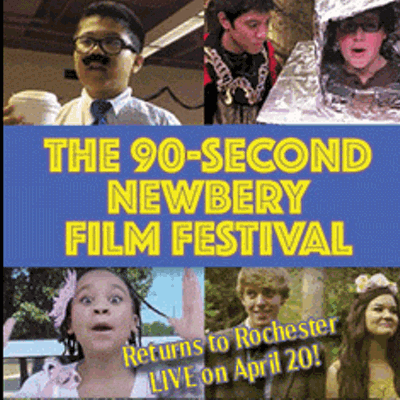[
{
"name": "500x250 Ad",
"insertPoint": "5",
"component": "15667920",
"parentWrapperClass": "",
"requiredCountToDisplay": "1"
}
]
How to meet the growing demand for recreational activities in Genesee Valley Park while preserving the park's historic character and sweeping river views is a major question for city planners as they plan the park's future.
The city's departments of Environmental Services and Recreation and Youth Services, along with the Genesee Waterways Center, are developing a master plan to guide the growth of the park area on the west side of the river over the next 20 to 30 years. The plan is funded by a $120,000 state grant.
An almost-final version of the plan will be presented at a public meeting at 5 p.m. on Wednesday, May 6, at the Genesee Waterways Center, 149 Elmwood Avenue, in the park. The completed plan will be submitted for state approval sometime in June.
"They've done a phenomenal job," says Caitlin Meives, preservation planner with the Landmark Society. "There's a whole lot of activities, infrastructure, and interests to balance in this important park and they've come up with, I think, a really excellent roadmap for the future that balances those needs."
Genesee Valley, one of three original parks in Rochester's park system, was designed by noted landscape architect Frederick Law Olmsted. The total park is approximately 655 acres and is divided by the Genesee River.
The park is owned by the City of Rochester, but the 502-acre east side is maintained by Monroe County. The west side, which is about 150 acres, is managed and maintained by the city.
The master plan is the first-ever comprehensive evaluation of the park's west side, says Jeffery Mroczek, project manager for the Genesee Valley Park West master plan. The last plan is about 30 years old, he says, and was done when an active rail line ran through the park's west side.
"So this is the first time we've been able to take a holistic look at the west side," Mroczek says.
One of the things that the new plan will look at is the facilities for the Waterways Center. The center, which offers kayaking, rowing, sculling, canoeing, and other activities, has outgrown its space, Mroczek says. It would be difficult to grow programming under the current conditions, he says.
"They're bursting at the seams," Mroczek says. "There's been a huge uptick of demand. Our Department of Recreation and Youth Services sees it as an integral component for recreation and getting access to the water for the community."
But the demand has a downside, too. The infrastructure needed along the river bank to support rowing programs and other activities could jeopardize the original purpose of the park, which is "to provide the citizens with a meaningful natural river experience close to the city," according to city paperwork.
"It's a complex puzzle to put together," Mroczek says. "We're trying to respect that history, while still being able to make it useful for current users."
Olmsted envisioned different uses for the east and west sides of the park, he says. The east was supposed to be more passive, Mroczek says, while Olmsted wanted active uses on the west side -- to a point.
"Right from the start, the city parks commission was pushing for boathouses and running tracks and bicycle tracks," he says. "He really wanted to keep that all on the west side. But at the same time, keep those sweeping river views and vistas."
The master plan will also evaluate conditions at the pool and ice rink complex, ball fields, tennis courts, lodge, and playgrounds. It will look at how vehicles and people move through the park, complete an analysis of the landscape, and include a study of the river shoreline -- mostly as it relates to access to and use of the water, Mroczek says.
Genesee Valley Park has three historic Olmsted pedestrian bridges, one on the west side of the park and two on the east side. They're all in bad shape, Mroczek says. The master plan will recommend restoration of the bridge on the west side, he says, but the bridge is owned by the state, which probably won't consider the restoration a priority, he says, since the bridge isn't open to vehicles.
Once the master plan is approved the state, Mroczek says, the city will start looking for funding for implementation.
Speaking of...
Latest in News
More by Christine Carrie Fien
-
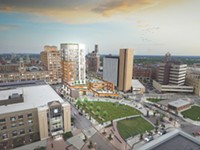
Building up
Mar 29, 2017 -
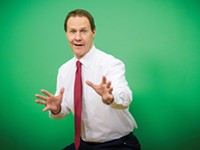
Hetsko's heart
Mar 15, 2017 -

Squeezing starts at GateHouse-owned Daily Record and RBJ
Feb 28, 2017 - More »


